Turmeric is often referred to as the Golden Spice of Life due to its wide range of healing powers. Do you have an upset stomach? Make a cup of turmeric tea. Itchy skin? Use a turmeric ointment. Ulcers? Inflammation? Stomach pain? Gum disease? You guessed it. Grab the golden spice. Yet history shows this healing Asian spice is used for much more than bodily ailments. In addition to its use as a material and food coloring dye, it’s considered a very holy spice in India.
The History of Turmeric
The name originates from the Latin, terra merita (merited earth) due to its vibrant orange hue. Turmeric (Curcuma longa) can be traced back over 4,000 years to the Vedic culture in India. It’s medicinal uses can be traced back to an Ayurvedic text from 250 BC. It was, and still is, used in Hindu festivals and events in India.
According to Wikipedia: “Turmeric has played an important role in Hindu spiritualism. Because of its yellow-orange coloring, turmeric was associated with the sun or the Thirumal in the mythology of ancient Tamil religion. Yellow is the color of the solar plexus chakra which, in traditional Tamil Siddha medicine, is the energy center relating to the metabolic and digestive systems. Orange is the color of the sacral chakra, and tied to the reproductive system.”
It was referred to as Indian saffron in medieval Europe due to its similarities to saffron which is much more expensive than turmeric. It wasn’t long before the spice found its way to China, then Africa, and eventually to Jamaica in the eighteenth century. In fact, turmeric is used in one of the most well known Jamaican dishes: Curried Goat.
Turmeric Preparation Process
Turmeric is a part of the ginger family so the full health benefits are found in the rhizome rather than the leaves. It can be used fresh, but is often used in its dried form. The rhizome is picked, boiled for 30-40 minutes, then dried in hot ovens before being ground to a fine powder. It’s traditionally dried in the sun, but using hot ovens is faster. Turmeric leaves are used in India to wrap food and steam it in a special pot. It’s used in Indonesia as a base for their curry dishes. Turmeric leaves must be used fresh to utilize the full aroma in the leaves.
Photo courtesy: Flickr-Steenburgs and Kdinuraj
The Many Uses of Turmeric
Turmeric is a vital tool in the Indian traditional medicine system. The active compound that houses the medicinal properties is the chemical curcumin. It’s antimicrobial and was recommended to people with stomach and liver ailments. It’s used to cure a variety of ailments.
- Relieves intestinal problems
Turmeric was used to dispel worms, dissolve gallstones, and improve digestion. Bitter spices activate the digestive juices and can help with weight loss. It’s also proved helpful for those with Irritable bowel syndrome (IBS) and Crohn’s disease.
- Diabetes
Curcumin might decrease blood sugar in diabetics. WebMD advises diabetics to be cautious, though, since it can cause the blood sugar to drop too low. Always consult your doctor first!
- Skin conditions
Fresh turmeric juice can aid people with skin conditions such as eczema, chicken pox, allergies, and shingles. It’s also good for aches, pains, and wounds. In some parts of Asia, turmeric is made in to a paste and spread on wounds before being wrapped with a cloth. Like the fresh juice, the paste acts as an antibacterial and anti-inflammatory medicinal cure.
- Alzheimer’s disease
Turmeric contains natural agents, including curcumin, that block the formation of beta-amyloid, the substance which forms the plaques that obstruct cerebral function in the disease.
- Rheumatoid Arthritis
Just as curcumin is great for skin conditions, turmeric is also beneficial for those with arthritis. By taking it internally daily, such as in the form of turmeric tea, it could help ease the pain and symptoms of arthritis.
Ceremonial Uses of Turmeric
Religious Ceremonies
Photo courtesy: Flickr-Sukanto and Satish
Turmeric has been used in ceremonies for thousands of years. In certain religious ceremonies, fresh turmeric is made in to a paste before applying to either the body or on a goddess statue during ritual (as is being done in the first picture above). Turmeric is used as a dye for the robes of Hindu monks, emphasizing its importance as a holy spice.
Wedding Festivities
Photo courtesy: Flickr-Vivek and Vinoth
Turmeric paste is made to adorn the bodies of the bride and groom as they prepare for the wedding. The application of the paste is called the Gaye halud, meaning yellow of the body, and occurs in weddings in the region of Bengal. The paste is applied to the bride and groom by friends and family. In some traditions, a dried tumeric tuber would be tied to a string and used as a symbol of marriage. The string of turmeric is also sometimes tied to the couple’s wrists during the marriage ceremony.
Well, now that you’ve learnt a little history about the golden spice of life, let’s head in to the kitchen! (Figuratively speaking.)
RECIPES
Golden Turmeric Tea
INGREDIENTS
- 1 tsp. turmeric
- 1 cup coconut milk
- 1 cup water/other milk (eg. whole, hemp, almond)
- 1 tsp. cinnamon
- 1 tsp. nutmeg
- Honey (to taste)
- 1/2 tsp. ginger (if desired)
- 2-3 whole cloves (if desired)
DIRECTIONS
- Mix coconut milk and water/milk of choice in a pot. I used almond milk in my brew. Warm on medium until it’s blended well.
- Add spices and stir continuously. The spices will lump up at first. Keep stirring and rub the lumps on the side of the pot to break them up a little.
- Lower the heat to medium low and let simmer for 10 minutes, occasionally stirring until smooth. Strain the liquid in to a coffee cup.
- Add honey to taste and enjoy!
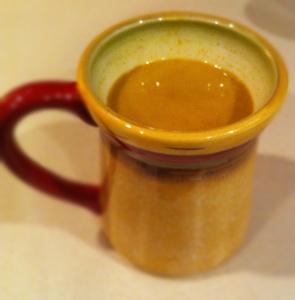
Indian Style Rice with Turmeric, Cashews, and Raisins
Photo courtesy: Flickr-Allrecipes.com
INGREDIENTS
- 1 tbsp olive oil
- 1 1/2 basmati rice
- 1 (14 ounce) can coconut milk
- 1 1/4 (14 ounce) can chicken stock (or veggie stock, if you’re vegetarian)
- 1/2 tsp ground cumin
- 1/2 tsp ground coriander
- 1 pinch crushed red pepper flakes
- 1 tsp salt
- 1/4 tsp ground turmeric
- 1 bay leaf
- 1/2 cup raisins
- 3/4 cup cashew halves
Click here for full cooking directions and instructional video.
What’s your favorite use for turmeric? Share your thoughts in the comments below!
Photo courtesy: Flickr-Steven Jackson


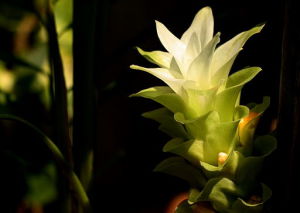
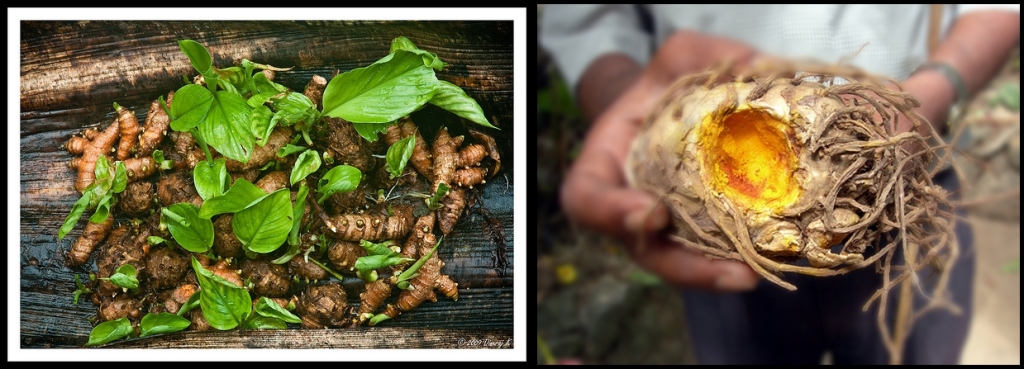

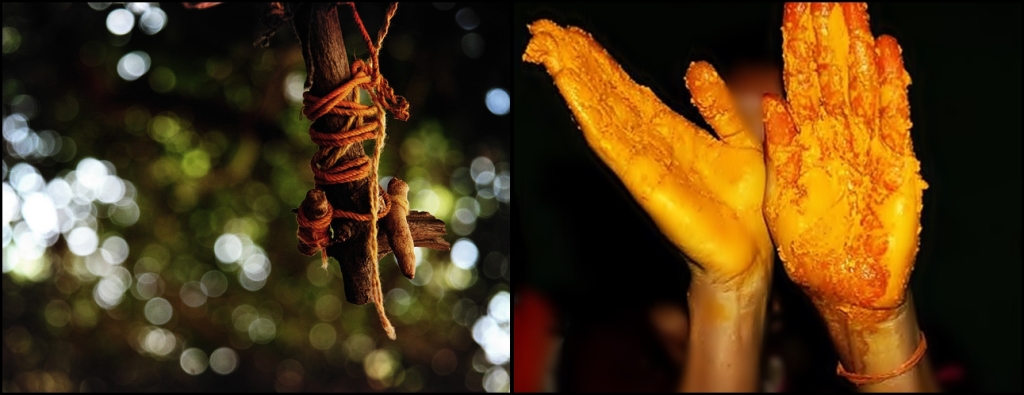
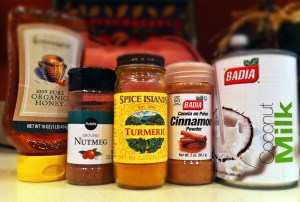
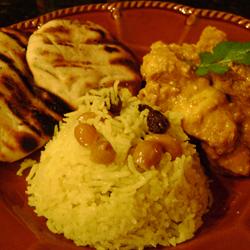

Very detailed article. Well done author. I did not know that turmeric is being used for such a long time